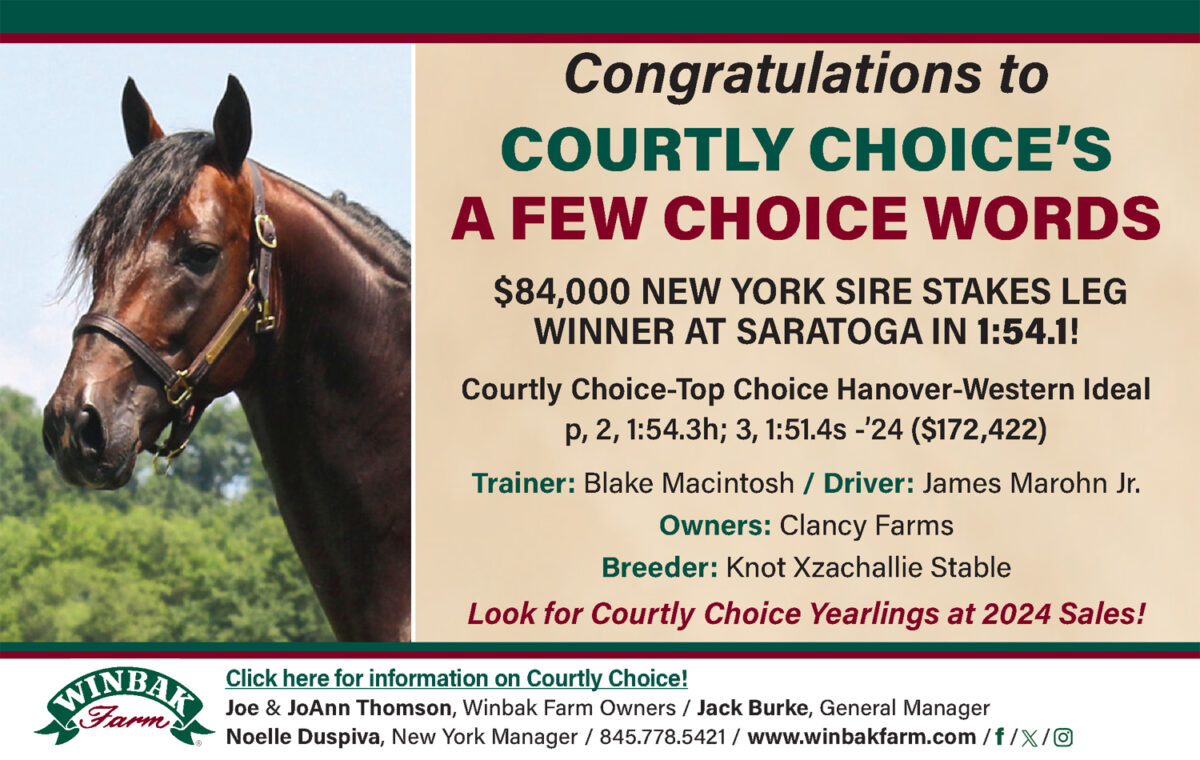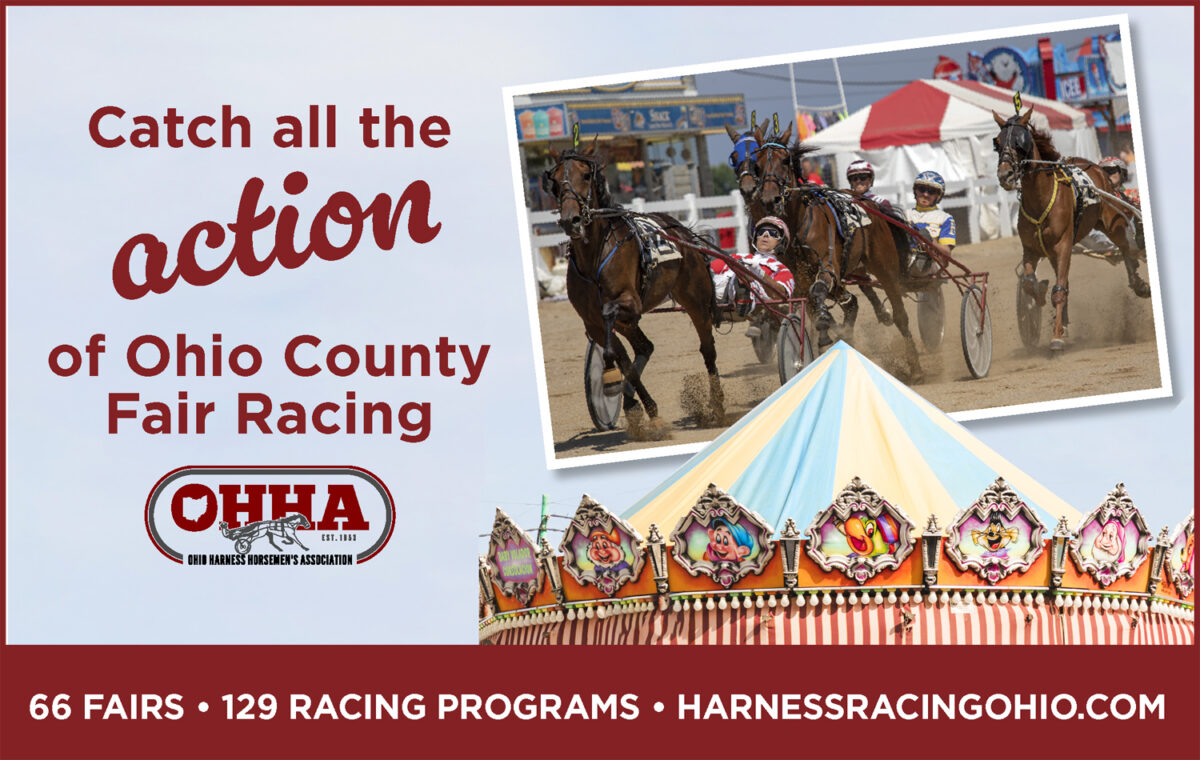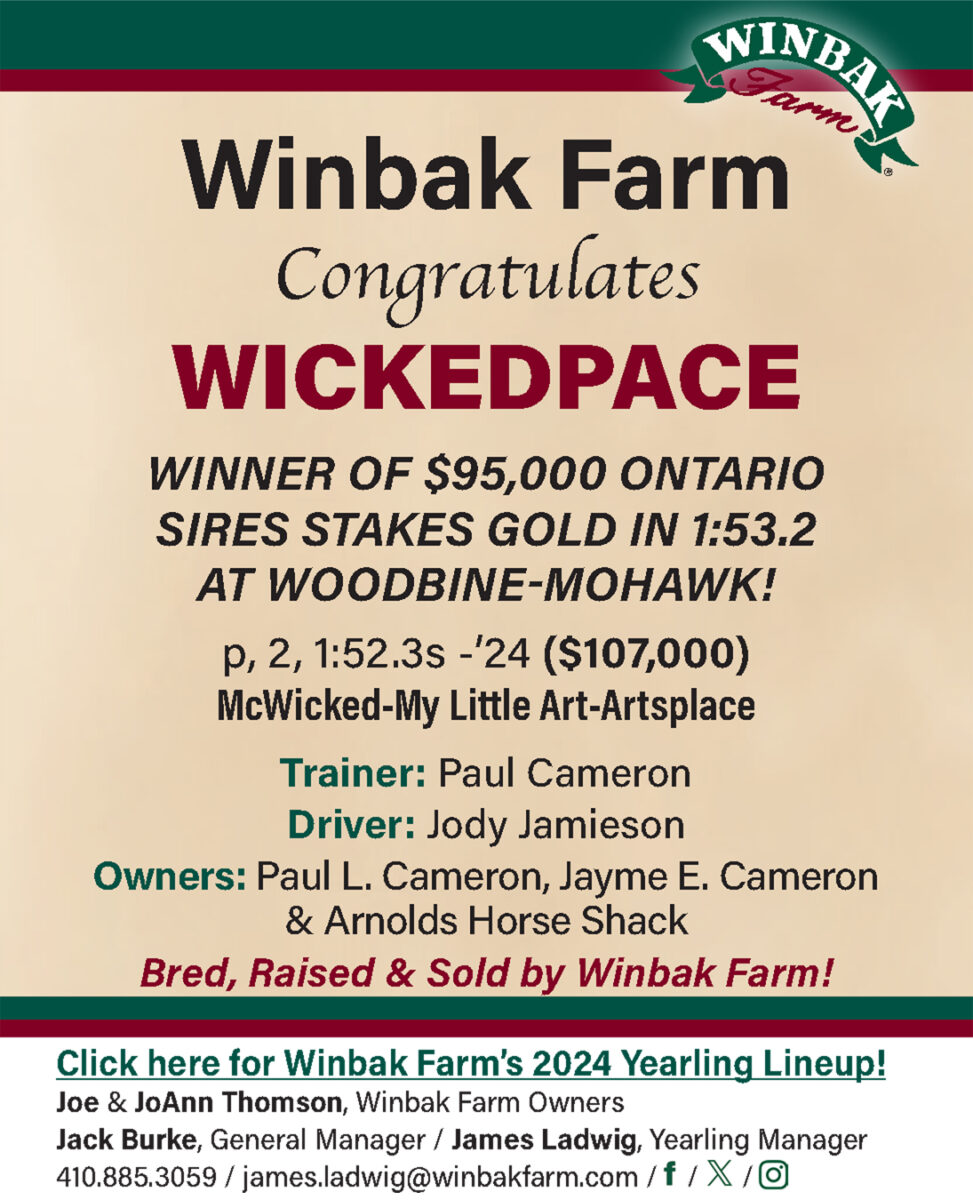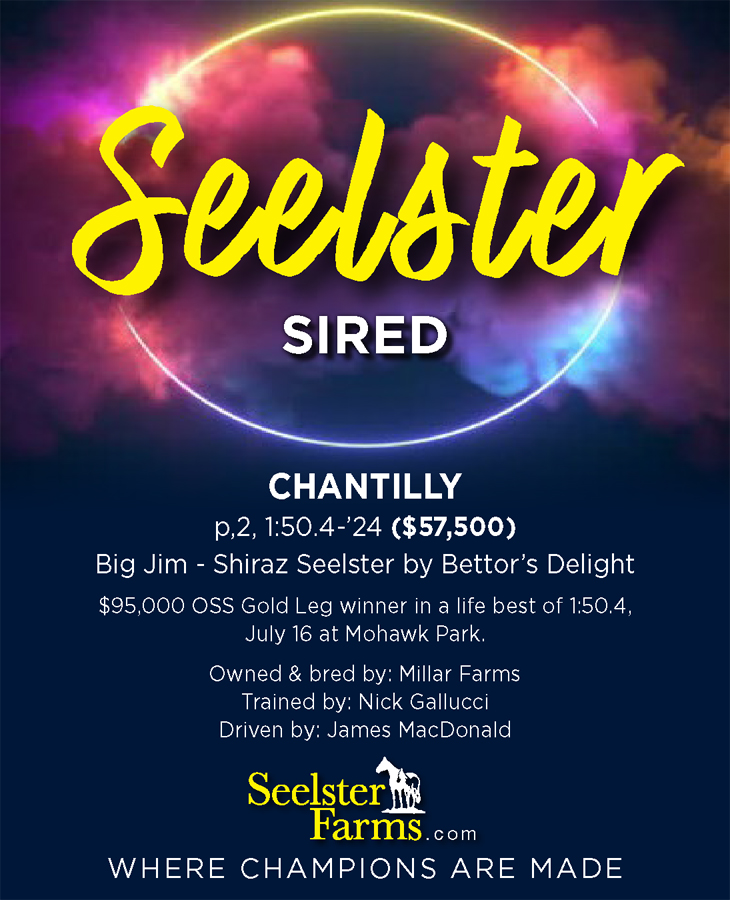

My Little Brown Jug memories, Part 3
by Murray Brown
Part 1 is here.
Part 2 is here.
1975 — Seatrain — A gelding had never before won the Jug, but as they say, there is a first for everything. Coming into the race, the overwhelming favorite had been Nero who had won 28 of his previous 31 starts. Seatrain was a relative novice making only his 10th lifetime start. Nero ended up encountering traffic problems, getting boxed in, finishing fifth in his elimination and failing to qualify for the final heat. This was a Jug that had more than its share of good horses. In addition to Nero and Seatrain, there were Whata Baron, Polaris Lobell, Bo Bo Arrow and the Canadian champion Albert’s Star. Just the fact that Seatrain was in Delaware to begin with was a minor miracle and the fact that he started in the Jug, perhaps a major one. There was some question as to whether he was good enough to even go to the Jug. Two weeks before the race, he rattled off an impressive win at Batavia. That was enough to convince his owner/breeder/trainer Lee Benson to send him to Delaware. Then on the eve of the race Seatrain was ill. He was running a fever. It appeared as though he would have to be scratched. But the racing gods were with his camp. It poured on Wednesday and on Jug Day Thursday. The race would have to be postponed and would take place on Friday. By then Seatrain was fine. He won the first heat in convincing fashion. Albert’s Star steered by Keith Waples won the second. The third and final heat was won by Seatrain who led all the way. Not only was it a coming out party for Seatrain, but it was also one for his driver Ben Webster as a first step to the fame he would ultimately achieve.
1976 — Keystone Ore — The Jug itself went as expected. The two pre-race favorites were Keystone Ore and Armbro Ranger. Armbro Ranger won the first elimination. Keystone Ore despite being saddled with the 8-hole came out and won the second. Yes, it may be difficult, but a horse can win the Jug despite a poor post position. Then Keystone Ore came back to win the final heat and the race.
But there was a significant backstory in this Jug. There were several horses in it who became sires, although none made a lasting impact. They included Keystone Ore, Armbro Ranger, Warm Breeze, Precious Fella, Windshield Wiper, Raven Hanover and Cavalcade. But there was one horse who might very well have been the best of the division and the one who’s impact on the breed was monumental. Stanley Dancer did not make many mistakes during his career, but he made a significant one this year. He had a pair of Most Happy Fella 3-year-old colts that he sold to Delawarian Bill Brooks for the price of $47,500. One of them was Afella Rainbow who turned into a solid “A” pacer on the New York Circuit earning $323,866. The other one was an ill-tempered colt named Oil Burner who turned out to be, one of, if not the very best of that class earning $535,541 despite being hardly eligible to many of the stakes. Both colts turned out to be bargains for trainer/driver Ben Webster. In the stud Oil Burner drew mixed reviews, but he sired one colt who had blazing speed and became a generational sire. His name was No Nukes. From No Nukes we got Western Hanover, who sired Western Ideal who gave us Rocknroll Hanover and American Ideal. From that same branch through Western Ideal, we got Always B Miki. From another branch by Western Hanover, we got The Panderosa, then Shadow Play, to the mighty Bulldog Hanover. All in part from a discard of Stanley Dancer. Ya never know!
1977 — Governor Skipper — Governor Skipper entered the race as the overwhelming favorite and he did what big favorites are supposed to do. He won the race in straight heats defeating a field that included Crash, Nat Lobell, Jambooger, Jade Prince, Super Clint and Jonquil Hanover. The only horse who might have been able to give him a battle on Delaware›s half mile track was Big Towner, but he wasn›t eligible. He was driven by regular driver John Chapman for trainer Bucky Norris for his owners the Wirtz Family who among other entities owned the NHL›s Chicago Blackhawks and the NBA’s Chicago Bulls. Governor Skipper was a wonderful horse who did most of his racing to his advantage on the New York tracks Roosevelt and Yonkers. He did what a horse who stood the way he did was not supposed to be able to do. He stood as the old timers would say “a quarter past eleven.” Ho toed out significantly. Such horses were not supposed to be good on a half mile track, the logic being that they would hit their knees on the turns. It apparently didn’t bother Governor too much since just about all of his best racing was done on the smaller ovals.
1978 — Happy Escort — To say that Happy Escort was a longshot wouldn’t come close to describing it accurately. Not only was he well behind the pre-race favorites Abercrombie and Falcon Almahurst coming into the Jug, but he was only considered fourth best in trainer Bill “Showbiz” Popfinger’s stable at the beginning of the 1978 racing season. Ahead of him were Say Hello, Spicy Charlie and Escape Artist.
Popfinger subsequently had a breakup with owner Leon Machiz and Say Hello and Escape Artist were taken out of his stable. Spicy Charlie became lame. That left Happy Escort as his only Jug possibility. Owner Bob Suslow wanted him in the Jug, so Popfinger entered him not thinking he had any chance. There were 13 entered so the field was split. As luck would have it, the race split so that the three best, Abercrombie, Falcon Almahurst and Flight Director were in one elimination. Happy Escort was lucky enough to draw away from all the strength. He won the first elimination and Falcon Almahurst won his over Abercrombie. The top four from each elimination came back for a third heat. Abercrombie and Falcon Almahurst got into a suicidal speed duel tiring each other out. Joe O’Brien was there with Flight Director to go by them. The three heat winners came back for a decisive three horse final.
Here is Popfinger’s description of what took place: “I had the lights on, the horn honking and the pedal to the metal. I went by those other drivers so fast, they got whiplash.” In actuality, Popfinger did make an unconventional move which probably won him the race. He drew the 3-hole in the three-horse race. Flight Director had the rail and they left, Flight Director, Falcon Almahurst and Happy Escort in that order. Once they settled down, Popfinger swooped Happy Escort to the front and he stayed there to win the race.
1979 — Hot Hitter — This Jug is likely best remembered for driver Herve Filion standing up in the sulky on the way to the winner’s circle. The horse was clearly the best of the 3-year-old crop in 1979. He came to the Jug as the clear favorite and left as the all-time money winning 3-year-old with earnings of $716,939. His closest competition in the Jug was Tijuana Taxi piloted by Jim Miller who finished second in both heats. Happy Motoring who had won the first leg of the Triple Crown, the Cane Pace finished a well beaten eighth. Hot Hitter went on to win the final leg of the Triple Crown, the Messenger Stakes with Henri Filion subbing for his brother Herve who had suffered a broken hand previously in a racing accident. Strike Out colts finished one-two in the Messenger with Striking Force getting up for second with Dr. John Hayes in the bike.
1980 — Niatross — Many might say that Niatross was our greatest ever. I am not about to disagree, even though I›m a member of the Somebeachsomewhere camp. However, after watching the replay of his Little Brown Jug win, I might be persuaded to switch camps. What he did was astounding. He won the first heat in a world record time of 1:55 on cruise control over a far behind Trenton Time. Then he came back in the second heat and lowered his own world record to 1:54.4, doing it seemingly easier than he had done in the first. Storm Damage finished second, with Tyler B third. There were only seven other pacers whose connections considered facing the great champion. It was the smallest Jug field since Bret Hanover scared away all but six opponents. In winning this Jug he became harness racing’s all-time money winner with earnings of $1,738,546 eclipsing Rambling Willie’s previous record. The performance was played out before the largest crowd to ever witness a harness race, as 45,621 were in the stands and around the perimeter of Delaware’s half mile track. There are some who say that the numbers Delaware puts up for attendance may be slightly fictitious. If that was the case this year, there were likely more rather than less than officially noted.
1981 — Fan Hanover — There are those that might say that this was a helluva horse race. There might be some others who might have said this was a stampede masquerading as a horse race. The race was won by Fan Hanover, still the only filly to win a Little Brown Jug. Coming into the race there were four projected favorites: the free legged Wildwood Jeb coming off of a victory in the Cane Pace, Landslide, coming off of a win in the Adios and undefeated for trainer driver Eddie Lohmeyer, the chestnut Bret Hanover colt Seahawk Hanover and the Albatross filly Fan Hanover poised to tackle the boys for the first time.
Seahawk Hanover won the first elimination for driver Ben Webster and trainer Skip Lewis. There was a mishap in the first elimination of this race where Eastern Skipper made a break for his trainer/driver/owner Herve Filion and knocked himself and two others including Landslide out of contention.
The second elimination was won by Fan Hanover, coming from last to first, something not often seen at Delaware, much of it three deep to just catch Wildwood Jeb at the wire.
It was in the third heat that the fireworks really exploded. Seahawk Hanover was leading when Wildwood Jeb put his foot through Seahawk’s right wheel resulting in a pileup that took four of the eight horses out of the race. Fan Hanover managed to avoid the melee. She went around the fallen horses and led the rest of the way to capture the Jug.
The vision that runs through my mind when thinking of this race is an enraged Skip Lewis running out on the track with Jimmy Marohn, Wildwood Jeb’s driver in his sights. I believed then and still think that if Lewis had not been restrained, he might have committed murder in front of 46,000 people.















